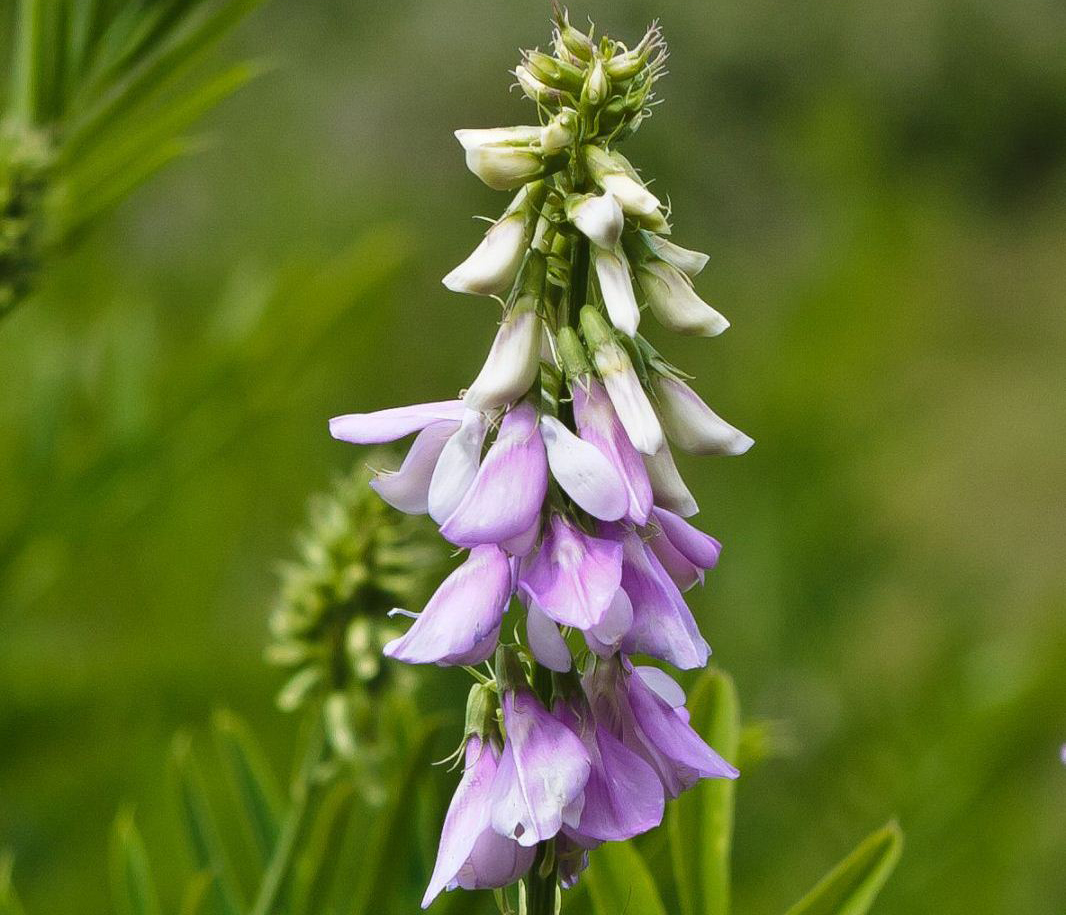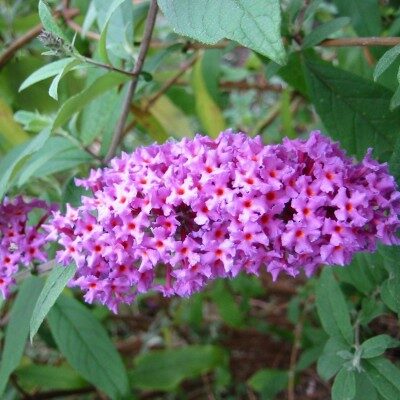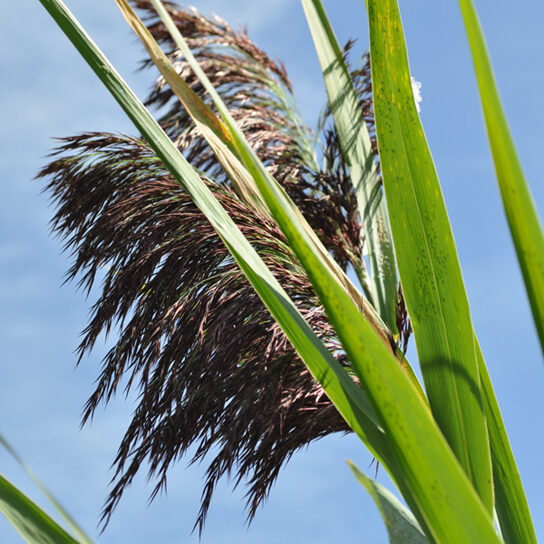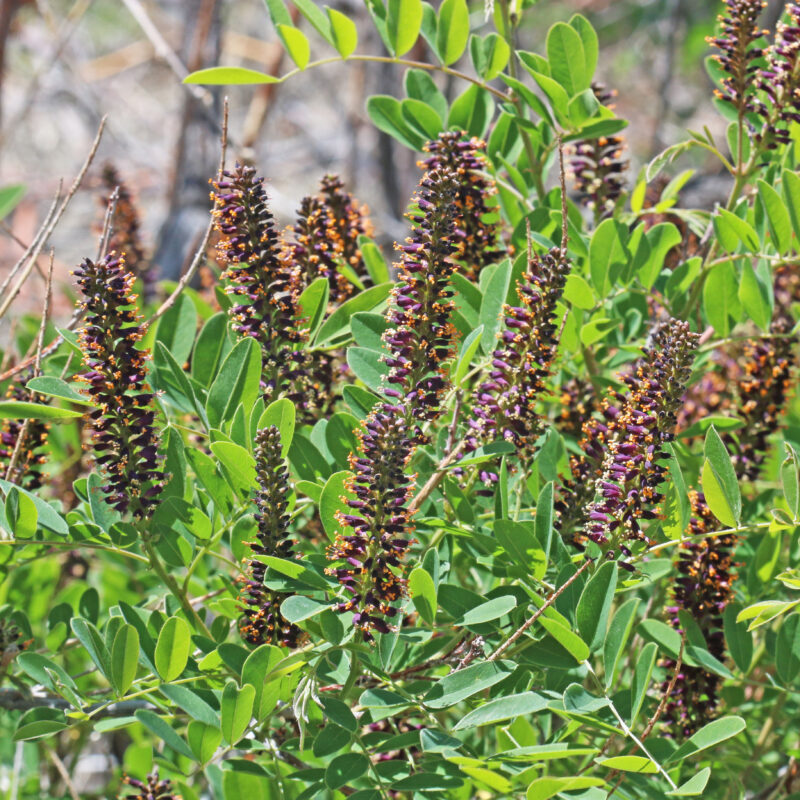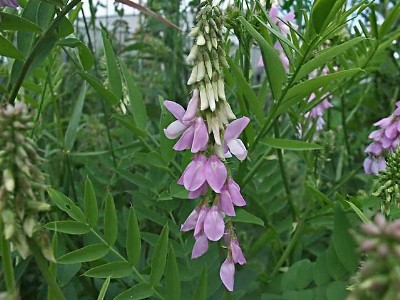
Goatsrue (Galega officinalis) is a deep-rooted perennial legume, regrowing each year from a crown and taproot. It was introduced in Utah as a forage crop, but quickly spread to other cropland, roadsides, pastures, waterways, and other wet, marshy areas. Plants may have up to 20 hollow stems reaching 2-6′ tall by late summer. The seedling leaves are large, oval and dark-green while the mature leaves are alternate, with 6-10 pairs of leaflets.
The plants are toxic to livestock due to a poisonous alkaloid in the stems and can be lethal if ingested in large quantities. The white and bluish purple pea-like blossoms each produce a smooth pod with 1-9 seeds per pod. A single plant can produce upwards of 15,000 pods. After the seeds drop, they can be spread by water, equipment, and animals, and can be viable for up to 10 years.
Besides being toxic to all ruminant animals, the plants displace desirable native plants and crops.
